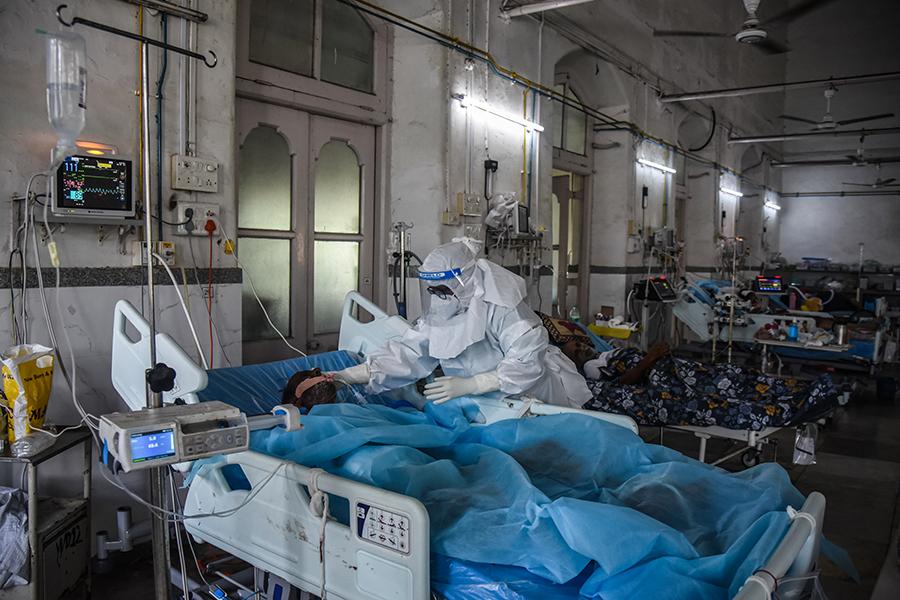What India can learn from the second Covid-19 wave to prepare for the next storm
There is an urgent need for better and closer partnerships between the government, industry, non-traditional partners and non-profits to respond to people’s needs during this pandemic.
2021 began on a strong positive note–the virus was on the wane, the vaccination drive had begun, economic indicators were looking up with a promising budget, and businesses were optimistic. But the second wave of the pandemic came like a storm, overwhelming the healthcare infrastructure in many parts of India. Record numbers in cases and fatalities, patients being affected with the severe form of infections, shortage of hospital beds, SOS messages for oxygen supplies and critical Covid-19 drugs have dominated conversations in the last few weeks. The central and state governments have been forced to impose lockdowns like last year so that the crisis does not get worse.
There is no doubt that we managed the first wave of the pandemic well. We put in place early measures, increased our testing capacities, ramped up facilities and manpower, and also followed global treatment protocols promptly and effectively. At an institutional as well as an individual level, directives were followed in 2020 and we were able to reduce community transmissions to a great extent.
What went wrong now and where did we miss the bus? It is important to draw some important lessons from both the first and the second waves, and ensure we prevent such a crisis next time.
- Vaccinate at scale
Firstly, we know that vaccination is perhaps the only solution we have at hand to bring down the number of new and severe cases, achieve herd immunity and protect people. The government has rightly allowed all citizens of 18+ years of age to get vaccinated, and it now has the responsibility of working with manufacturers to ensure enough vaccine stocks. While there are some supply challenges at present, we can still cover enough ground if we increase numbers by involving more players.
- Ensure critical medical supplies
Secondly, we have to ensure unrestricted supplies of essential and critical medical supplies during restrictions and lockdowns. Perhaps a sense of complacency and overconfidence led to unanticipated shortages of medicines, medical supplies and hospital beds. All the planning that went into successfully tackling the first Covid-19 wave was disregarded and we must accept this as a collective responsibility. The second wave has underlined the urgent need for continued focus on emergency preparedness, planning and Covid-19 appropriate behaviour. The government needs to work out a mechanism by which healthcare providers can invest in maintaining an inventory of essential medicines and medical supplies at critical centres to provide adequate buffer time to cater to demand surges. Testing and surveillance need to continue to track any rise in cases, outbreaks and potential hotspots.
It must be also understood that hospitals are not built for Covid-19 and are not equipped to suddenly increase oxygen supplies or set up plants. In addition to the exponential cost, they don’t have space and trained staff to manage them. Allocating time and resources to handling the logistics of setting up an oxygen plant, only takes away from actual medical and healthcare work which is the priority of hospitals and their clinicians. The second wave has infected the population in a more serious manner. We need to further study and assess treatment protocols to manage moderate to severe cases more effectively and prevent fatalities.
- Informed policy development
Informed policy development and Covid-19 appropriate behaviour must be at the centre of our national strategy for pandemic management. We have to repeat or improve upon what we were doing in the past. At no point should social distancing, infection management, sanitisation and wearing of masks be compromised. Consistent and continued messages have to be given to the public, patients, families, and staff. Rules should be the same for everyone on this.
- Catch new variants early
India will also need to invest in research and expansion of genome sequencing of positive Covid-19 test samples to catch new variants early. This can enable the government and public health specialists to review management strategies and modify steps as per emerging new strains and global practices and methodologies. We will need advanced digital and analytics systems to convert data into Covid-19 management protocols.
- Better collaboration
There is an urgent need for better and closer partnerships between the government, industry, non-traditional partners and non-profits to respond to people’s needs during this pandemic. This is a war-like situation and we have to respond likewise by creating a Covid-19 nodal centre, in coordination with the private sector for supply and distribution of medicines, oxygen cylinders, hospital beds, and so on. These are tough times but with a radical, bold approach, swift action, and steadfastness, we can be prepared to overcome any challenge.
The writer is MD and CEO of Fortis Healthcare
The thoughts and opinions shared here are of the author.
Check out our end of season subscription discounts with a Moneycontrol pro subscription absolutely free. Use code EOSO2021. Click here for details.

